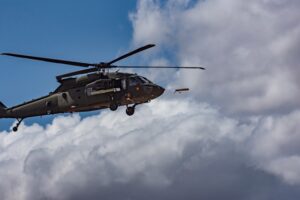
NASHVILLE, Tenn. — The Army is currently soliciting industry’s input to inform the path forward on its Air Launched Effects (ALE)-Small and Large efforts, with plans to potentially begin fielding the new systems by fiscal year 2028. Brig. Gen. Robert Barrie, program executive officer for aviation, told reporters at the Army Aviation Association of America (AAAA) annual conference here, the Army has released three Request for Information notices to industry focused on the ALE-Small and Large architectures, mission systems and all-up…

 By
By 











